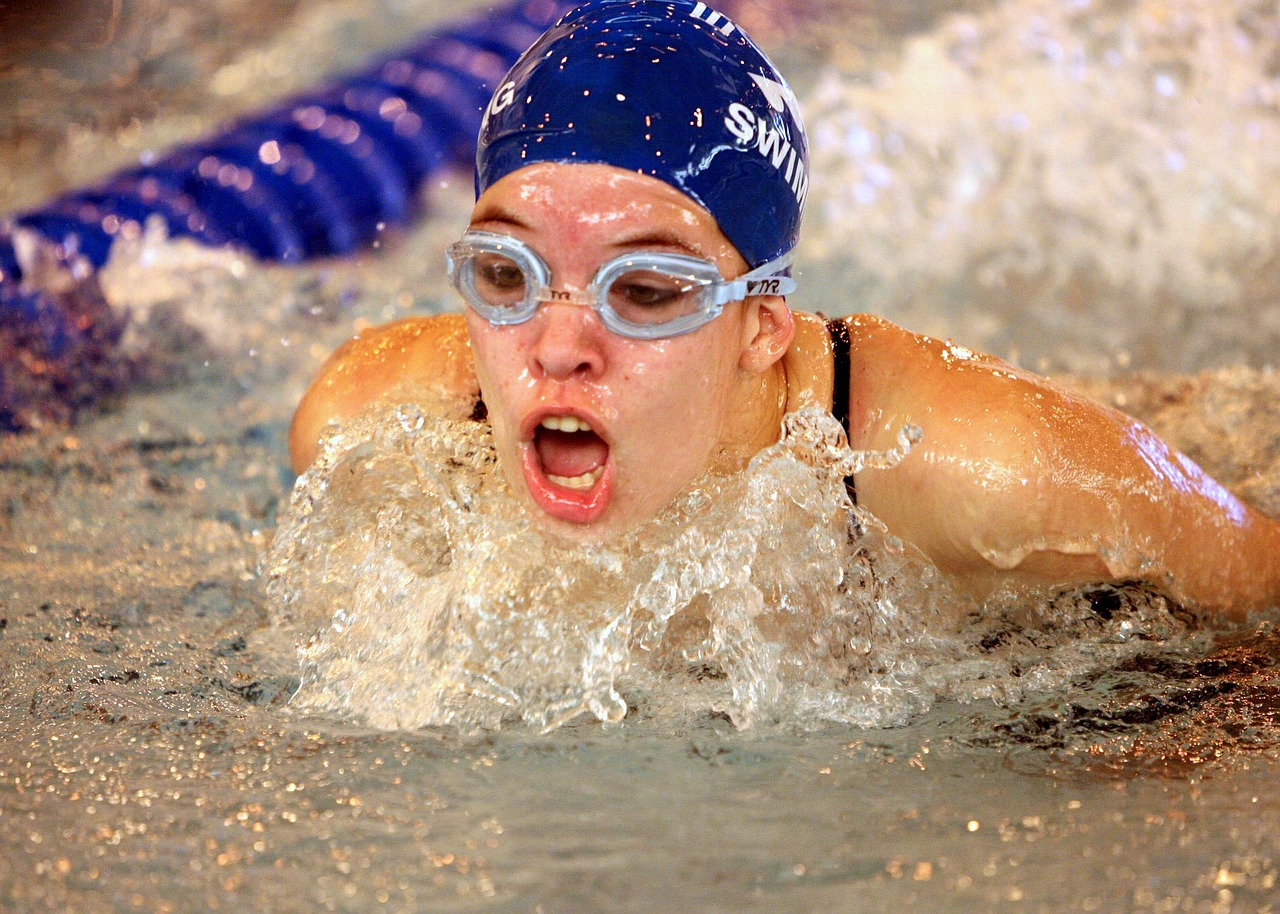Columbia Swim Test: The Secrets and Tips to Pass the Columbia Swim Test
Welcome, future Columbian University students and swim enthusiasts, to a guide that unveils the secrets and tips to pass the Columbia Swim Test!
Whether you’re a prospective student preparing for admission or a current Columbia University student seeking to meet this challenge head-on, this blog is your ultimate companion to swim test success.
Imagine standing one step away from your college journey, and ready to embark on a new chapter filled with opportunities and growth.
Advertisements
As you navigate through the halls of academia at Columbia University, there is one test that awaits you, the Columbia Swim Test.

The Columbia swim test is an important part of the University experience, this test has left many wondering how to overcome its trials and be successful.
But do not panic! We are here to share with you knowledge, expert advice, and practical tips that will equip you with the skills and confidence needed to pass the Columbia Swim Test with flying colors.
So, dive in with us as we unveil the secrets that will empower you to conquer this challenge.
Advertisements
Overview and Importance of the Columbia Swim Test
The Columbia Swim Test is a requirement for all undergraduate students enrolled at Columbia University.
It aims to assess and ensure that students possess basic swimming skills, allowing them to safely navigate water bodies.
The test comprises a series of exercises designed to evaluate a student’s ability to swim and tread water.
It is conducted in a controlled and supervised environment by trained professionals who prioritize safety and support throughout the process.
The Columbia Swim Test at Columbia University is a mandatory assessment designed to ensure students have the necessary swimming skills and water safety awareness.
The primary objective of the Columbia Swim Test is to prioritize safety and ensure that students can comfortably handle themselves in aquatic environments.
It plays a crucial role in promoting a safe and healthy campus environment. By passing the test, students demonstrate their ability to swim proficiently and confidently, reducing the risks associated with water-related activities.
The Basic Requirements of the Columbia Swim Test
We will examine the key swimming skills and abilities evaluated, as well as the different components of the test.
We will also emphasize the significance of meeting the minimum requirements to successfully pass the test:
Evaluating Swimming Skills and Abilities
Below are some of the specific swimming skills and abilities that are evaluated during the test:
-
Freestyle Stroke Proficiency: The ability to swim using the freestyle stroke is a fundamental requirement.
Test takers are evaluated on their technique, coordination, and overall efficiency in performing this stroke. -
Backstroke Competence: In addition to the freestyle stroke, the test also assesses the individual’s ability to swim using the backstroke.
Proper form, control, and coordination are essential for demonstrating proficiency in this stroke.
-
Breath Control and Endurance: Test takers must showcase their ability to control their breathing while swimming and maintain it for an extended period.
This skill is vital for ensuring comfort and safety in the water.
Components of the Columbia Swim Test
To thoroughly evaluate an individual’s swimming abilities, the Columbia Swim Test comprises several components.

These components assess different aspects of swimming to provide a comprehensive overview of the test taker’s capabilities. Let’s explore these components:
-
Timed Swim: One of the key components involves completing a timed swim over a specified distance.
This test is designed to assess both speed and endurance, indicating the test taker’s ability to cover a particular distance within a given time frame. -
Treading Water: Another critical component of the Columbia Swim Test is treading water.
Test takers are required to demonstrate their proficiency in staying afloat and maintaining their position without the aid of any flotation devices.
This skill is vital for safety in situations where swimming is not possible or practical. -
Water Safety Knowledge: While not a physical component, the Columbia Swim Test may also include a theoretical assessment of water safety knowledge.
This aspect aims to ensure that individuals are aware of important safety protocols, such as recognizing signs of distress, understanding basic rescue techniques, and comprehending the dangers associated with various aquatic environments.
Importance of Meeting the Minimum Requirements
Meeting the minimum requirements of the Columbia Swim Test is of utmost importance for several reasons. Let’s explore the importance of successfully passing the test:
-
Personal Safety: The minimum requirements of the swim test are set to ensure individuals possess the necessary swimming skills and abilities for their safety.
Acquiring these skills not only enables individuals to navigate aquatic environments confidently but also equips them to handle unforeseen circumstances effectively.
-
Preventing Accidents: By meeting the minimum requirements, individuals are less likely to become victims of water-related accidents.
These requirements serve as a baseline for determining an individual’s readiness to participate in aquatic activities, reducing the risk of mishaps and potential harm. -
Engaging in Aquatic Programs: Many educational institutions, camps, and recreational facilities mandate the Columbia Swim Test as a prerequisite for participating in swimming and water-based activities.
Meeting the minimum requirements opens up a wide array of opportunities for individuals to engage in various programs and fully enjoy water-based experiences.
The Essential Strategies for the Columbia Swim Test
Below are the essential strategies to help you excel in the Columbia Swim Test:
- Assess Your Current Swimming Abilities
Before embarking on any journey, it is crucial to have a clear understanding of your starting point.
Assess your current swimming abilities by considering factors such as your comfort level in the water, your familiarity with basic swimming strokes, and your overall swimming technique.
Be honest with yourself and identify areas where improvement is needed.
Also, find resources for improvement, to assess and enhance your swimming abilities, consider seeking resources such as swimming lessons or practice sessions.
Enrolling in swimming classes taught by certified instructors can provide structured guidance and personalized feedback.
Local swimming clubs or community centers often offer lessons for beginners and intermediate swimmers.
Additionally, online tutorials and instructional videos can be valuable resources to supplement your learning journey.
- Build your Stamina and Strength for the Swim Test
Building stamina and strength is essential for completing the Columbia Swim Test.
Engage in regular cardiovascular exercises such as running, cycling, or using the treadmill machine to improve your overall fitness level.
Incorporate high-intensity interval training (HIIT) sessions into your routine to simulate the intensity of the swim test.

Gradually increase the duration and intensity of your workouts over time to push your limits and improve your endurance.
To enhance your stroke efficiency and overall swimming technique, incorporate swimming drills into your practice sessions.
Focus on drills that target specific aspects of your stroke, such as body position, arm movement, and leg kick. For example, the catch-up drill can improve your stroke timing and arm coordination.
Research and explore different drills relevant to your areas of improvement to maximize the effectiveness of your training.
- Master the Test Components: Timed Swimming and Treading Water
- Timed swimming strategies:
When approaching the timed swimming part of the Columbia Swim Test, pacing yourself is key.
Start with a comfortable and sustainable pace, gradually increasing your speed as you progress. Avoid exerting excessive energy in the beginning, as it may lead to fatigue later on.
Practice timed swims during your training sessions to familiarize yourself with maintaining a consistent pace.
Additionally, focusing on proper breathing techniques, such as rhythmic breathing, can help you conserve energy and maintain endurance throughout the swim.
-
Treading water techniques:
Treading water effectively requires proper technique and energy conservation.
Begin by adopting a vertical body position in the water, keeping your head above the surface.
Utilize a combination of scissor kicks and small circular motions with your hands to maintain stability. Aim to relax and minimize unnecessary movements to conserve energy.
Practicing treading water for extended periods during your training can improve your endurance and comfort level in this component of the test.
READ ALSO: History of open water swimming in Australia
Tips from Successful Columbia Swim Test Takers
We will share insights from previous test takers who have triumphed over the swim test, as well as expert advice from swimming coaches and instructors.
By learning from their experiences and implementing their tips, you can boost your confidence and increase your chances of acing the Columbia Swim Test.
Sharing Experiences: Insights from Previous Test Takers
To provide you with valuable firsthand knowledge, we reached out to several students who have successfully passed the Columbia Swim Test.
Through virtual interviews, we gained valuable insights into their experiences, the challenges they faced, and the strategies they employed to overcome them.
Many test takers mentioned overcoming initial fears and anxieties as a significant challenge. The thought of swimming in front of others, especially for those who were not keen swimmers, caused anxiety.
However, they emphasized the importance of pushing through their comfort zones and gradually building confidence in the water.
Previous Test Takers Strategies for Success
-
Start Early: Beginning preparations well in advance allows for consistent practice and gradual improvement.
Developing a routine early and sticking to it can enhance your skills and help build endurance. -
Seek Guidance: Seeking assistance from friends, swimming coaches, or instructors can provide valuable feedback and guidance.
Consider enrolling in swimming lessons or joining a swim club to receive professional instruction tailored to your needs. -
Practice Regularly: Consistent practice is key to success. Make swimming a regular part of your routine, allocating specific time slots for training.
Focus on building endurance, mastering swimming techniques, and improving your overall fitness. - Set Goals: Setting specific goals, such as swimming a certain distance within a given time frame, can motivate you to stay on track and measure your progress effectively.
-
Visualize Success: Mental preparation plays a vital role in any physical endeavor.
Envision yourself confidently swimming through the test, maintaining a positive mindset, and crossing the finish line successfully.
Visualization can help reduce anxiety and boost self-confidence.
Expert Advice: Tips from Swimming Coaches or Instructors

Swimming coaches and instructors with experience in preparing students for swim tests emphasize the following tips:
- Training Methods
Swimming coaches and instructors with experience in preparing students for swim tests emphasize mastering the following training methods:
-
Technique Focus: Prioritize learning and refining proper swimming techniques.
Correct form and efficiency in the water are crucial for conserving energy and maintaining momentum during the test. -
Endurance Building: Gradually increase your swimming distance and duration to build endurance.
Incorporate interval training, where you alternate between periods of intense effort and rest, to improve your cardiovascular fitness.
- Cross-Training: Engage in complementary exercises outside of the pool, such as strength training and cardio workouts, to enhance overall fitness and support your swimming performance.
- Mental Preparation
Swimming coaches and instructors also stress the importance of mental preparation. Consider the following tips:
- Positive Self-Talk: Cultivate a positive inner dialogue by reminding yourself of your strengths, progress, and capabilities. Replace negative thoughts with affirmations and encouraging statements.
- Relaxation Techniques: Practice relaxation techniques, such as deep breathing exercises and visualization, to reduce stress and improve focus before the test.
- Familiarize yourself with the Test Environment: Visit the pool where the test will take place beforehand. Getting familiar with the surroundings and the pool’s layout can help alleviate anxiety on the day of the test.
- Technical Skills
Swimming coaches and instructors highlight the importance of mastering the following technical skills:
-
Freestyle Technique: The freestyle stroke is often the most efficient and commonly used technique during the swim test.
Focus on proper body alignment, arm movement, and breathing techniques to swim efficiently and conserve energy. -
Treading Water: Treading water effectively allows you to rest and regain composure during the test.
Practice different treading techniques, such as sculling or eggbeater kick, to improve your stability and endurance in the water. -
Floating and Survival Skills: Familiarize yourself with basic floating and survival skills, such as floating on your back or performing simple rescues.
These skills can provide a safety net and boost your confidence in the water.
READ ALSO: 7 Swimming Techniques That Will Save Your Life
Last-Minute Tips for the Columbia Swim Test
We’ll explore some last-minute strategies to help you make the most of your test day experience.

Additionally, we’ll discuss how to cope with the outcome, whether successful or not, and provide guidance on seeking support and improving your swimming skills. So, let’s dive in!
Essential Items to Bring for the Columbia Swim Test
On the test day, it’s crucial to have all the necessary items to ensure a smooth experience. Here’s a checklist of essential items to pack:
- Swimsuit: Choose a comfortable swimsuit that allows for freedom of movement. Opt for one that you feel confident and relaxed in.
- Goggles: Protect your eyes and improve visibility underwater with a pair of well-fitting goggles. Test them beforehand to ensure they don’t leak.
- Towel: Carry a soft and absorbent towel to dry off after the test. A quick-drying towel may come in handy if you have limited time between activities.
- Flip-flops: Walking around the pool deck in flip-flops (swimming pool slippers) will protect your feet from any potential hazards while maintaining hygiene.
- Swim Cap (optional): If you have long hair, consider wearing a swim cap to keep it out of your face and reduce drag.
Practical Advice for Test Day
To perform your best during the Columbia Swim Test, keep the following advice in mind:
-
Hydration and Nutrition: Stay hydrated throughout the day by drinking water and consuming hydrating foods like fruits and vegetables.
Avoid heavy meals close to the test time to prevent discomfort during swimming. Opt for a light and balanced meal a few hours beforehand. -
Warm-up Routine: Before the test, engage in a brief warm-up routine to prepare your muscles.
The war-up can include stretching exercises, gentle swimming, and mobility exercises to loosen up your body. -
Mental Preparation: Relaxation techniques such as deep breathing, visualization, or meditation can help calm your nerves before the test.
Remind yourself of your previous swimming experiences and focus on the positive aspects to boost your confidence.
-
Time Management: Plan your day accordingly to ensure you have enough time for transportation, changing clothes, and familiarizing yourself with the pool facilities.
Arriving early will allow you to adjust to the environment and reduce any last-minute stress.
Acknowledging the Test Outcome
- Don’t Be Discouraged by Failure:
In the unfortunate event that you don’t pass the Columbia Swim Test, it’s important not to be discouraged.
Remember, this is just one aspect of your university experience, and there are various paths to success.
Acknowledge that setbacks are a part of life and can serve as valuable learning opportunities. Embrace the challenge and use it as motivation to improve.
- Seek Support and Resources:
If you don’t pass the swim test, don’t hesitate to seek support and utilize available resources to enhance your swimming skills. Here are a few options:
-
Swim Lessons: Consider enrolling in swimming lessons to build your confidence and improve your technique.
Many local community centers, swimming clubs, and private instructors offer lessons catered to individuals of different skill levels. - Campus Resources: Reach out to your university’s athletic department or recreation center to inquire about swimming programs or clubs that provide additional training opportunities.
-
Study Materials: Explore online resources, books, and videos dedicated to improving swimming skills.
Learning from experts and experienced swimmers can provide valuable insights and techniques to refine your abilities.
READ ALSO: Core Aquatic Skills You Need to Know
Conclusion
In conclusion, remember that success comes from perseverance, hard work, and maintaining a growth mindset.
Approach the Columbia Swim Test with confidence, knowing that you have done your best to prepare. Believe in yourself and your abilities.
Regardless of the outcome, you are embarking on a journey of self-improvement and personal growth.
We wish you the best of luck in your swim test, and we can’t wait to see you excel in the pool.



